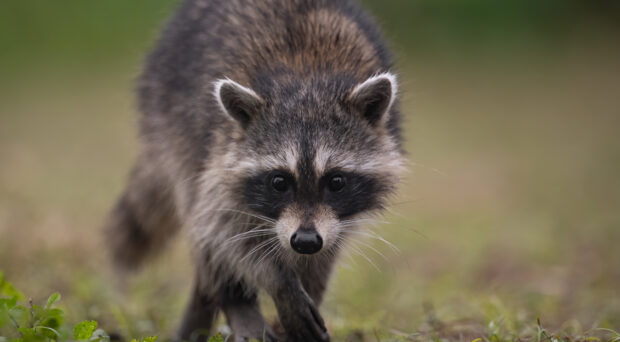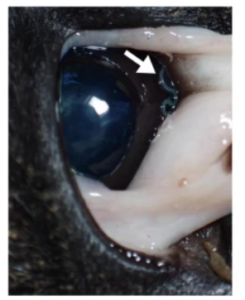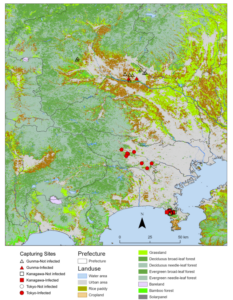
Readers in the Kanto region of Japan might want to keep an eye out for raccoons… or not. According to a new study by Doi et al. in Parasites & Vectors, the oriental eyeworm (Thelazia callipaeda) has been found in raccoons and Japanese raccoon dogs.
This species of parasitic worms belongs to the Thelazia genus, which consists of nematode worms that act as parasites in avian and mammalian eyes—including those of humans—as well as related tissues.

Hosts of T. callipaeda include various wild mammals such as wolves, red foxes and raccoon dogs, but are also found in domestic animals such as cats and dogs. There have also been human infections—by the year 2000 over 250 cases had been reported. T. callipaeda is transmitted by species of fruit flies that ingest secretions from the eye, such as Phortica variegate. The resulting infection is often asymptomatic, though it can result in redness, swelling and excessive watering of the eye, and, in extreme cases, even result in blindness.
As the colloquial name might suggest, the parasitic worm is often found in far eastern countries, but in recent years it has been found in other locations, such as the United Kingdom, France, Spain and Italy.
In the aforementioned paper recently published by Kandai Doi and colleagues, the authors found cases of it in wildlife of the Kanto region in Japan. The area is the most populated part of the country and includes the city of Tokyo, though woodlands remain in the suburbs, where potential wildlife hosts of T. callipaeda live. Doi et al. specifically took a look at Japanese raccoon dogs, colloquially known as tanuki, as well as raccoons, an invasive species that was introduced in the 1960s and 1970s from a combination of escaping from zoos and being kept as exotic pets.
Between January 2020 to December 2021, the authors examined 178 raccoons and 15 Japanese raccoon dogs in the Tokyo, Kanagawa and Gunma prefectures for the presence of eye worms, and those that were found were morphologically identified as T. callipaeda. In total, they found that 36 of the 178 raccoons (20.2%) were infected, and the authors split those specimens into four groups based on age and sex:
- Of the juvenile male raccoons 8 out of 22 were infected, or 36.4%
- Of the adult male raccoons, 13 out of 87, or 14.9%
- Of the adult female raccoons, 12 out of 51, or 23.5%
- Of the juvenile female raccoons, 3 out of 18, or 13.3%
As for the Japanese raccoon dogs, 2 of the 15 Japanese raccoon dogs (13.3%) were infected.

The authors also took sequences from the T. callipaeda specimens and compared the results with published data. They found that “three sequences obtained from raccoons and raccoon dogs shared the same haplotypes as those reported in humans, dogs, and cats in Japan.”
So, what are the implications of this? Many of the potential hosts of T. callipaeda are often found in woodland settings. However, as a species that can also thrive in suburban settings, it is important to identify raccoons as a potential carrier of the T. callipaeda, and to recognize that they may potentially play a role in transmitting it to dogs, cats, and humans.
So, if you live in a region where the eyeworm has been found, should you all avoid potential host animals of T. callipaeda? Well, if it’s wildlife, you should anyway. But you should not have to worry about getting it from your pets or a neighbor’s cat or dog. In a report from 2015, Otranto and Dantas-Torres suggest that the only way to transmit T. callipaeda is from those pesky fruit flies landing on or around an animals eyes. So, if you’re a proud but concerned pet owner, you don’t have to worry about cuddling with your beloved dog or cat.

Comments